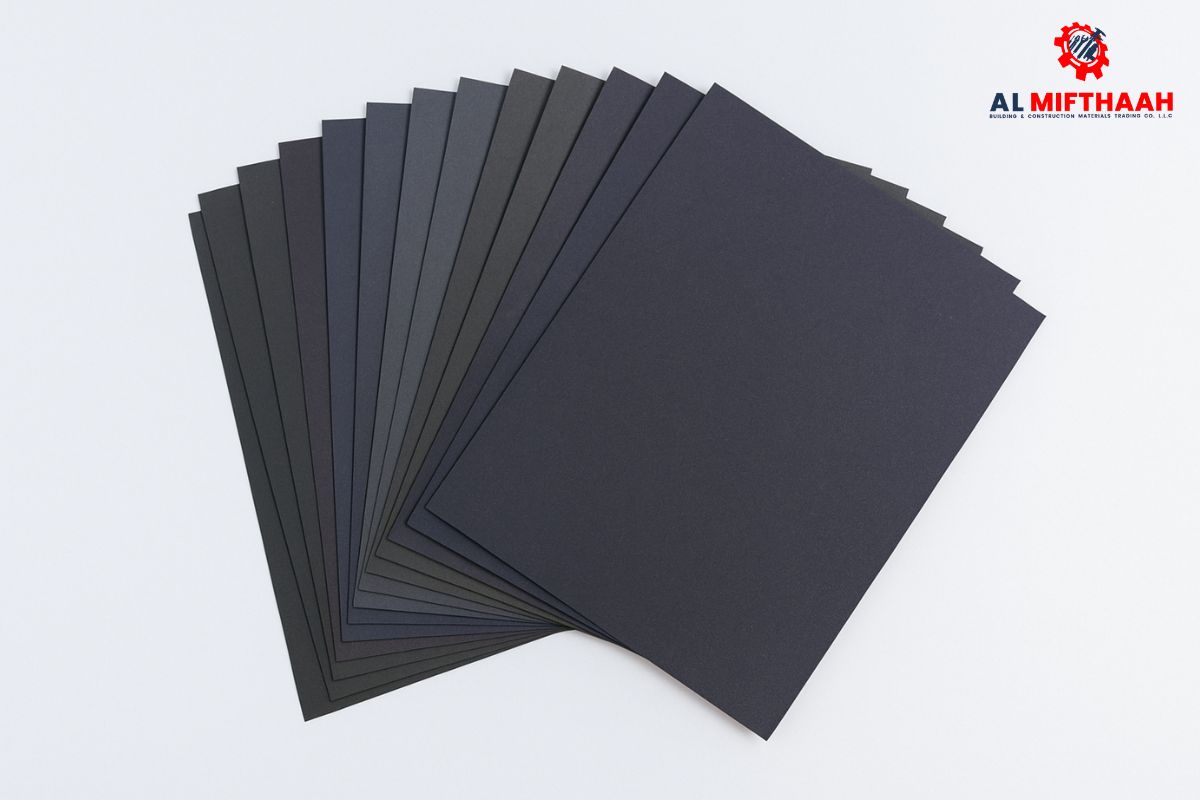- October 31, 2025
- by Almifthaah
How to Use Waterproof Paper for Wet Sanding and Polishing
Table of Contents
- Key takeaways
- What is waterproof paper?
- Why use waterproof paper for wet sanding and polishing?
- Step-by-step guide to using waterproof paper
- Tips for better results
- Common mistakes to avoid
- Final thoughts
- FAQs
Key takeaways
- Keep waterproof paper perpetually wet to minimize scratches and create a smooth finish.
- Begin with coarse grit and proceed to finer ones for optimal polishing performance.
- Purchase from reputable suppliers, such as abrasive tools supplier in Dubai for longevity.
- Smooth, consistent sanding produces a mirror-like, professional finish.
Waterproof paper is a unique abrasive paper made to work with water, keeping dust down and providing a smooth, gloss finish. To get a smooth, blemish-free finish on metal, wood, or paint, waterproof paper is excellent.
Additionally, it polishes surfaces without causing damage. You can get it in different grits from an abrasive tools supplier Dubai. Applying it in the right manner provides a perfect shine. Let’s know how to apply it for wet sanding and polishing.
What is waterproof paper?
Waterproof paper, usually silicon carbide or aluminum oxide based, is cut specifically to be used in contact with water or other lubricants. The water carries off the debris and protects the paper from clogging, keeping the sanding surface clean and efficient.
However, it differs from normal paper in that it features a tear-resistant backing even when wet. This product is perfect for smooth finishing jobs where precision and control are essential.
Why use waterproof paper for wet sanding and polishing?
Wet sanding is a method of minimizing dust, heat, and scratches. When paired with waterproof paper, it produces a smoother, shinier finish than dry sanding.
Following are a few advantages:
- Reduces scratches: The water serves as a lubricant, letting the abrasive travel smoothly.
- Prevents clogging: Keeps the surface of the paper clean, ensuring consistent performance.
- Controls heat: Water cools down the surface, preventing damage or color change.
- Improves finish: It gives a mirror-like polish, especially on paint or metal surfaces.
Moreover, if you’re sourcing tools from reliable emery roll suppliers in Dubai, you’ll find waterproof papers in different grit ranges, ideal for both rough sanding and final polishing.
Step-by-step guide to using waterproof paper
Now, let’s walk through how to use waterproof paper the right way.
1. Gather Your Materials
You will need:
- Waterproof paper (in different grits, like 800, 1200, 2000, or 3000)
- Clean water or a water and mild soap mixture
- A sanding block or rubber pad
- A soft cloth to wipe
- A polishing compound (optional)
2. Get Ready with the Surface
Clean the surface completely before sanding to remove dirt and grease. Any particle remaining behind will lead to scratches on sanding.
Therefore, if you’re working with metal, make sure it’s rust-free. On painted surfaces, wait until the paint is completely dry before you start.
3. Soak the Waterproof paper
Soak the waterproof paper in water for 5 to 10 minutes prior to use. This will soften the paper and improve flexibility.
Additionally, soaking also enables the grit to work more smoothly and avoids tearing.
4. Begin with a Coarser Grit
Start with a lower grit (such as 800 or 1000) when you want to smooth out rough spots or defects. Clip the paper to a sanding block to maintain even pressure.
Furthermore, stroke the paper around or along the surface, depending on the type of surface. Keep the paper and surface wet during the operation.
5. Use Finer Grits
Once the surface is smoother, change to a higher grit, such as 2000 or 3000. At each step, the finish should be finer and scratches removed from the previous grit.
Moreover, clean the surface between each change of grit with a cloth to inspect progress.
6. Rinse Often
While sanding, the paper will pick up tiny particles. Rinse the waterproof paper and surface often to avoid buildup and scratching.
This step helps you achieve a cleaner, smoother finish.
7. Polish with Finishing
When wet sanding, you can use a polishing compound with a microfiber cloth or machine polisher. Buff to a shine.
However, when working on metals or paintwork, this step provides a glass-like finish that beautifully reflects light.
For power tool users, a Dubai flap disc supplier and Saif Precision Tools will be able to assist you in procuring polishing discs that are ideal for bigger surfaces or cleaning in deeper detail.
Tips for better results
- Keep the paper damp: Dry sanding leaves the surface scratched and uneven.
- Don’t apply too much pressure: Allow the paper to perform its work. Light pressure provides for even results.
- Check frequently: Sand until you’ve reached the smoothness you’re looking for.
- Work in a good light: It makes imperfections easier to see.
- Work in clean water: Grubby water contains grit, which produces unwanted marks.
Common mistakes to avoid
With excellent tools and materials, tiny errors can undo your work. Don’t do these:
- Missing grits: Skipping from coarse to ultra-fine grit too abruptly leaves tell-tale marks.
- Working on dry paper: Always soak waterproof paper before use.
- Not cleaning the surface: Dust or debris causes deep scratches.
- Over-sanding: Sanding too much will thin paint or metal layers.
By preventing these mistakes, your polishing and sanding work will appear more professional and will be longer-lasting.
Final thoughts
Wet sanding and polishing can look challenging, yet with slow movements and a lot of patience, anyone can produce stunning results. Proper use of waterproof paper—keeping it soaked and proceeding slowly—can make all the difference. It doesn’t matter if you obtain materials from abrasive tools suppliers in Dubai or Emery Roll Suppliers In Dubai; quality is essential. To finish with a perfect shine, use equipment from a flap disc supplier in Dubai.
FAQs
Waterproof paper is applied for wet sanding surfaces to obtain smooth, scratch-free, and polished finishes.
Yes, you may reuse it if it is not clogged and the abrasive surface is intact.
Water cools the surface, avoids clogging, and minimizes scratches for an even polish outcome.


